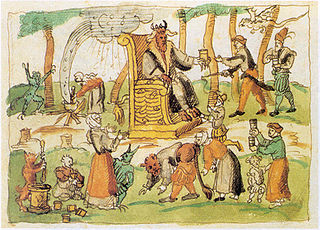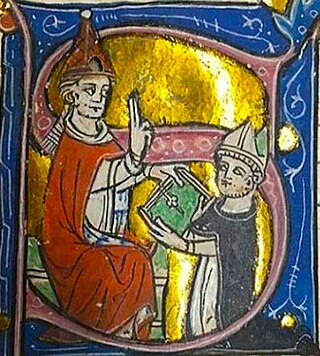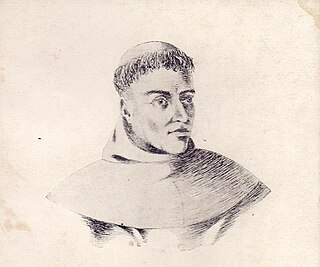
The Inquisition was a judicial procedure and a group of institutions within the Catholic Church whose aim was to combat heresy, conducting trials of suspected heretics. Studies of the records have found that the overwhelming majority of sentences consisted of penances, but convictions of unrepentant heresy were handed over to the secular courts, which generally resulted in execution or life imprisonment. The Inquisition had its start in the 12th-century Kingdom of France, with the aim of combating religious deviation, particularly among the Cathars and the Waldensians. The inquisitorial courts from this time until the mid-15th century are together known as the Medieval Inquisition. Other groups investigated during the Medieval Inquisition, which primarily took place in France and Italy, include the Spiritual Franciscans, the Hussites, and the Beguines. Beginning in the 1250s, inquisitors were generally chosen from members of the Dominican Order, replacing the earlier practice of using local clergy as judges.

The Malleus Maleficarum, usually translated as the Hammer of Witches, is the best known treatise purporting to be about witchcraft. It was written by the German Catholic clergyman Heinrich Kramer and first published in the German city of Speyer in 1486. Some describe it as the compendium of literature in demonology of the 15th century. Kramer blamed women for his own lust, and presented his views as the Church's position. The book was condemned by top theologians of the Inquisition at the Faculty of Cologne for recommending unethical and illegal procedures, and for being inconsistent with Catholic doctrines of demonology.
The Roman Inquisition, formally Suprema Congregatio Sanctae Romanae et Universalis Inquisitionis, was a system of partisan tribunals developed by the Holy See of the Catholic Church, during the second half of the 16th century, responsible for prosecuting individuals accused of a wide array of crimes according to Catholic law and doctrine, relating to Catholic religious life or alternative religious or secular beliefs. It was established in 1542 by the leader of the Catholic Church, Pope Paul III. In the period after the Medieval Inquisition, it was one of three different manifestations of the wider Catholic Inquisition, the other two being the Spanish Inquisition and Portuguese Inquisition.

Heinrich Kramer, also known under the Latinized name Henricus Institor, was a German churchman and inquisitor. With his widely distributed book Malleus Maleficarum (1487), which describes witchcraft and endorses detailed processes for the extermination of witches, he was instrumental in establishing the period of witch trials in the early modern period.

Jacob Sprenger was a Dominican inquisitor and theologian principally known for his association with a well-known guide for witch-hunters from 1486, Malleus Maleficarum. He was born in Rheinfelden, Further Austria, taught at the University of Cologne, and died in 1495 in Strasbourg.

A Witches' Sabbath is a purported gathering of those believed to practice witchcraft and other rituals. The phrase became especially popular in the 20th century.
Nicholas Rémy, Latin Remigius (1530–1616) was a French magistrate who claimed in his book to have overseen the execution of more than 800 witches and the torture or persecution of a similar number. His work shows much influence from Jean Bodin.

Bernard Gui, also known as Bernardo Gui or Bernardus Guidonis, was a Limousin Dominican friar, Bishop of Lodève, and a papal inquisitor during the later stages of the Medieval Inquisition.

Summis desiderantes affectibus, sometimes abbreviated to Summis desiderantes, was a papal bull regarding witchcraft issued by Pope Innocent VIII on 5 December 1484.

The Directorium Inquisitorum is Nicholas Eymerich's most prominent and enduring work, written in Latin and consisting of approximately 800 pages, which he had composed as early as 1376. Eymerich had written an earlier treatise on sorcery, perhaps as early as 1359, which he extensively reworked into the Directorium Inqusitorum. In compiling the book, Eymerich used many of the magic texts he had previously confiscated from accused sorcerers. It can also be considered as an assessment of a century and a half of official Inquisition in the "albigensian" country.

The title canon Episcopi is conventionally given to a certain passage found in medieval canon law. The text possibly originates in an early 10th-century penitential, recorded by Regino of Prüm; it was included in Gratian's authoritative Corpus juris canonici of c. 1140 and as such became part of canon law during the High Middle Ages.
The Formicarius, written 1436–1438 by Johannes Nider during the Council of Florence and first printed in 1475, is the second book ever printed to discuss witchcraft. Nider dealt specifically with witchcraft in the fifth section of the book. Unlike his successors, he did not emphasize the idea of the Witches' Sabbath and was skeptical of the claim that witches could fly by night. With over 25 manuscript copies from fifteenth and early sixteenth century editions from the 1470s to 1692, the Formicarius is an important work for the study of the origins of the witch trials in Early Modern Europe, as it sheds light on their earliest phase during the first half of the 15th century.
The Aix-en-Provence possessions were a series of alleged cases of demonic possession occurring among the Ursuline nuns of Aix-en-Provence in 1611. Father Louis Gaufridi was accused and convicted of causing the possession by a pact with the devil, and he was tortured by strappado and his bones dislocated. He was then executed on April 1611 by strangulation and his body burned. This case provided the legal precedent for the conviction and execution of Urbain Grandier at Loudun more than 20 years later. This event led to possessions spreading to other convents and a witch burning in 1611.
The Brethren of the Free Spirit were adherents of a loose set of beliefs deemed heretical by the Catholic Church but held by some Christians, especially in the Low Countries, Germany, France, Bohemia, and Northern Italy between the thirteenth and fifteenth centuries. The movement was first identified in the late thirteenth century. It was not a single movement or school of thought, and it caused great unease among Church leaders at the time. Adherents were also called Free Spirits.

The Basque witch trials of the seventeenth century represent the last attempt at rooting out supposed witchcraft from Navarre by the Spanish Inquisition, after a series of episodes erupted during the sixteenth century following the end of military operations in the conquest of Iberian Navarre, until 1524.

Alfonso de Castro, O.F.M., known also as Alphonsus à Castro, was a Franciscan theologian and jurist. He belongs to the group of theologian-jurists known as the School of Salamanca, though he denied belonging to a specific school of thought and condemned many theologians who did. He was most well-known in the sixteenth century for his work Adversus omnes haereses, libri XIV, an encyclopedic treatise on ancient and modern heresies.
In the early modern period, from about 1400 to 1775, about 100,000 people were prosecuted for witchcraft in Europe and British America. Between 40,000 and 60,000 were executed. The witch-hunts were particularly severe in parts of the Holy Roman Empire. Prosecutions for witchcraft reached a high point from 1560 to 1630, during the Counter-Reformation and the European wars of religion. Among the lower classes, accusations of witchcraft were usually made by neighbors, and women made formal accusations as much as men did. Magical healers or 'cunning folk' were sometimes prosecuted for witchcraft, but seem to have made up a minority of the accused. Roughly 80% of those convicted were women, most of them over the age of 40. In some regions, convicted witches were burnt at the stake.
Strixology is a genre of writing about the reality and dangers of witches, their origins, character and power; often in the context of theology or of demonology.
Helena Scheuberin was an Austrian woman who stood trial accused of witchcraft in 1485. Her trial and acquittal led Heinrich Kramer to write Malleus Maleficarum, which was published two years later.
The Witch trials in Spain were few in comparison with most of Europe. The Spanish Inquisition preferred to focus on the crime of heresy and, consequently, did not consider the persecution of witchcraft a priority and in fact discouraged it rather than have it conducted by the secular courts. This was similar to the Witch trials in Portugal and, with a few exceptions, mainly successful. However, while the Inquisition discouraged witch trials in Spain proper, it did encourage the particularly severe Witch trials in the Spanish Netherlands.









